The TowerHere are the first photos of the tower setup as we plan to ship it to the Maldives. The setup consists of the top tower segment (UPRIGHT scaffolding tower) including guard rail (about 3 m total height) and is currently operating on upper campus at UCSD, La Jolla, California, USA, collecting data for a local CARPOS campaign. You are looking at the north face of the tower slightly from the north-east. The small tray mounted to the north-side carries three unshaded instruments (clear-dome pyranometer, 695 µm filtered pyranometer, GTR-511 UV/VIS spectrometer). 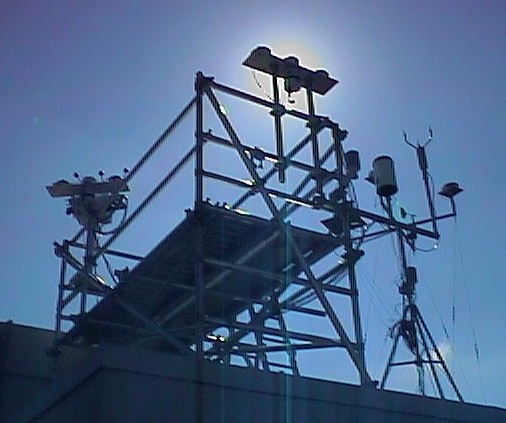 The south-east corner of the platform carries the sun tracker with another set of three shaded instruments (clear-dome pyranometer, 695 µm filtered pyranometer, GTR-511 UV/VIS spectrometer). The tracker follows the sun year-round and shades the instruments with its three shading balls. Both sets of instruments operate at the same height and will be the highest instruments on the tower with an unobstructed view of 360°. This is another look at the setup from the south-west side. It gives a good look at the sun tracker pointing into the sun (which is behind the photographer). The ladder will ultimately be inside the frame, the tower platform has a walk-through hatch, which can be closed. 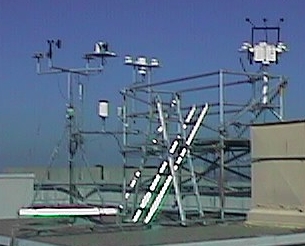 Here are some more impressions and close-ups of the instruments. This page will be updated with equivalent pictures of the final setup in the Maldives in January 1998. This is a close-up of the sun tracker, the viewer is looking south, the sun is above to the right. By the way, the background image of this page is is a similar look right into the sun. 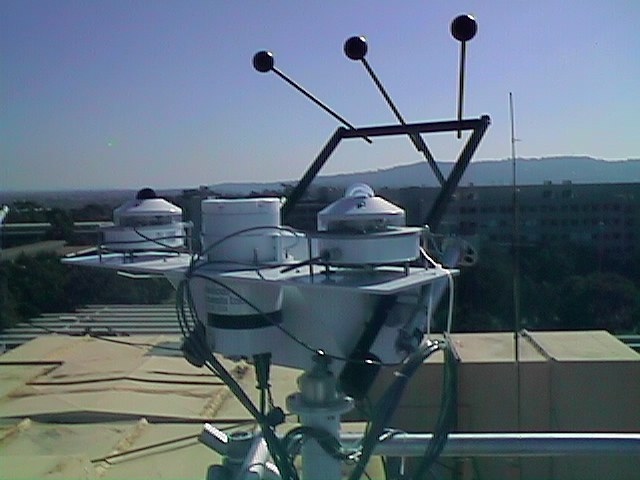 The next image is a look across the shaded instruments, looking almost due north, to the unshaded set of sensors. Note the air fans mounted to the bottom of the Kipp & Zonen CM-21 pyranometers. The air stream exits around the domes and helps to stabilize the dome temperatures and to keep dust away. The BSI GTR-511 UV-VIS spectrometer is mounted in an aluminum split-clamp (painted white) which can be leveled with three screws and is fixed with another 4 screws. 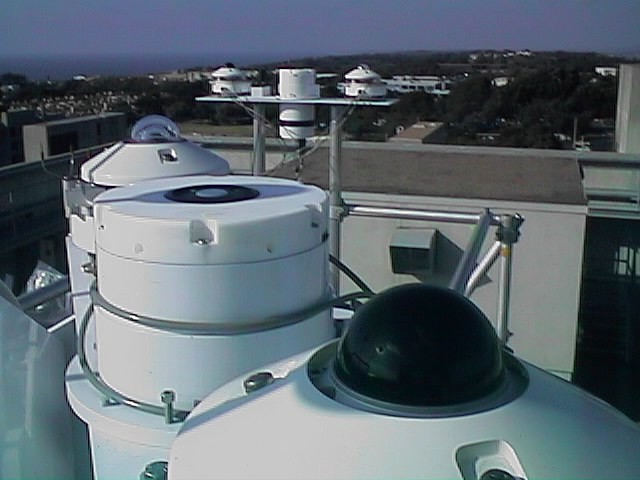 Finally, here's a look across the unshaded sensors to the west, the ocean in the background. The ASD grating spectrometer sensor (black cylinder with white diffuser) is visible between the BSI GTR-511 and the red-dome pyranometer. 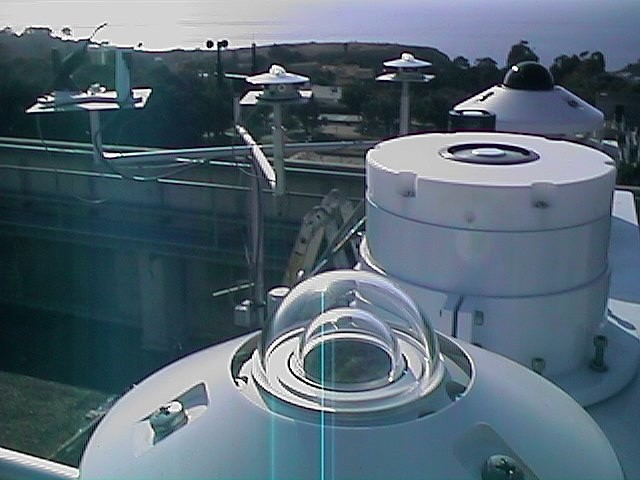 |